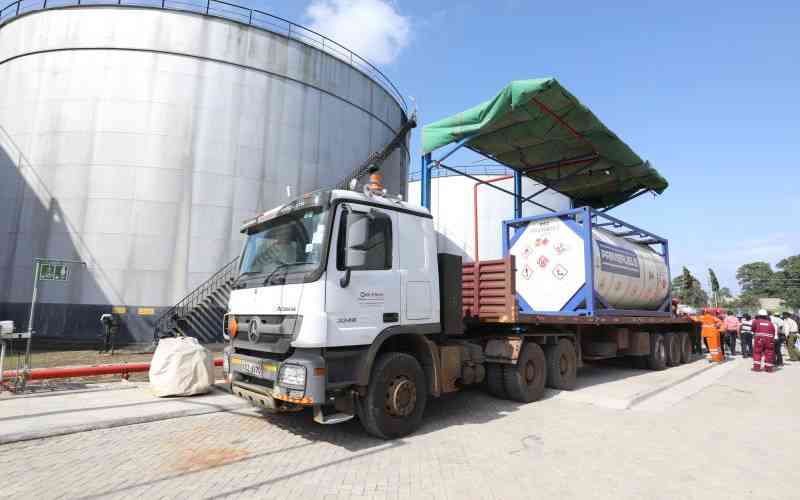Thirteen years after Kenya struck oil in Turkana, commercial production has yet to begin. Despite high expectations in 2012 that oil would transform the country’s economy, the reserves remain untapped, and Kenya has yet to become an oil producer. The big question remains: why is there no production yet?
In March 2012, Tullow Oil announced a major oil find in the Lokichar Basin of Turkana County. With estimates of over 560 million barrels of recoverable oil, Kenya suddenly joined the ranks of African nations with proven petroleum reserves. The government promised jobs, revenues, and development, while investors envisioned Kenya as East Africa’s next oil hub.
Fast forward to 2025, however, and the oil is still underground. Apart from a short-lived pilot project between 2018 and 2019, Kenya has never achieved commercial oil production.
The Early Oil Pilot Scheme (2018–2019)
To test the market and logistics, Kenya launched the Early Oil Pilot Scheme (EOPS) in 2018. Under this project:
- About 2,000 barrels of crude per day were trucked from Turkana to Mombasa.
- In August 2019, Kenya exported its first shipment of 200,000 barrels, making headlines.
But the pilot scheme quickly revealed problems. Trucking crude over 1,000 km on poor roads was extremely costly, unsafe, and unsustainable. By 2019, the scheme was shut down.
This left the oil reserves stranded and proven to exist, but uneconomic to extract without large-scale infrastructure.
Why No Production Yet? The Key Barriers
1. Infrastructure Gaps: No Export Pipeline
The single biggest reason is the lack of a pipeline from Turkana to the coast. Kenya’s crude is waxy and requires heating, making it even more expensive to transport. Plans for the Lokichar–Lamu pipeline (850 km) have stalled for over a decade due to high costs (over $1.1 billion) and investor pull-outs. Without it, large-scale exports are impossible.
2. High Production Costs
Turkana’s oil is not cheap to extract. Its waxy nature means it must be heated constantly to remain flowable. Combined with remote geography and poor infrastructure in Turkana, production costs are far higher than in places like Nigeria or Saudi Arabia. Investors are hesitant to commit billions unless global oil prices guarantee profits.
3. Investor Uncertainty
Tullow Oil, the main operator, has been struggling with debt and has tried selling part of its Kenyan stake. Other partners, like Africa Oil Corp and TotalEnergies, have either scaled back or shifted focus. Investor fatigue has left the project in limbo. Without strong financial backers, the oil cannot be developed.
4. Regulatory Delays
For years, Kenya lacked a clear legal and regulatory framework for petroleum. Disputes over revenue-sharing between the national government, county governments, and local communities added to uncertainty. Only now, in 2025, is EPRA holding nationwide consultations on draft petroleum regulations. This delay has discouraged investors.
5. Global Energy Transition
Kenya is trying to develop oil at a time when the world is shifting toward renewables. Major investors are increasingly cautious about putting money into long-term oil projects, especially those in challenging locations. This global shift has made it even harder for Turkana oil to attract the financing it needs.
Is It That Kenya Is Not Capable?
It would be unfair to say Kenya is “not capable.” The real issue is structural challenges:
- The oil is remote and expensive to extract.
- The infrastructure bill is massive.
- The timing coincided with global oil market shifts.
Kenya is capable of producing oil, but the conditions have not aligned. Without the pipeline, cheaper financing, and investor confidence, production will remain stalled.
The Cost of Delay
The delays have real consequences:
- Stranded resources: Billions of barrels lie idle underground.
- Lost revenues: Kenya misses out on taxes, royalties, and foreign exchange earnings.
- Frustrated communities: Turkana residents, who were promised jobs and development, see little benefit and risk growing resentment.
- Investor exit: Each delay makes it harder to keep investors interested.
Can EPRA’s New Regulations Unlock Progress?
In 2025, the Energy & Petroleum Regulatory Authority (EPRA) is rolling out seven draft regulations covering licensing, local content, environmental safeguards, and cost control. These are designed to attract investment while protecting communities.
If implemented well, these rules could help Kenya avoid the mistakes of countries like Sudan and Nigeria, where oil wealth fuelled conflict. However, strong regulations alone will not build a pipeline or lower costs; they are only one part of the puzzle.
Also read: Eskom vs Independent Power Producers Who Holds South Africa’s Energy Future?
For Turkana oil to move forward, three big steps are needed:
- Pipeline Development: Kenya must secure financing and partnerships to build the Lokichar–Lamu pipeline or explore alternative export routes, such as through Uganda’s planned pipeline.
- Investor Confidence: Clear regulations, stable contracts, and political commitment are needed to bring back investors.
- Community Benefits: Turkana locals must see tangible benefits, jobs, infrastructure, and fair revenue-sharing to avoid unrest.
Kenya still has the oil. The reserves are proven. But whether it will ever flow at scale depends on political will, investment, and infrastructure.
- Best case: With strong regulations, renewed investor partnerships, and financing for the pipeline, Kenya could see first oil in the early 2030s.
- Worst case: If delays continue, Turkana’s oil may remain underground indefinitely, stranded by the global shift to cleaner energy.



